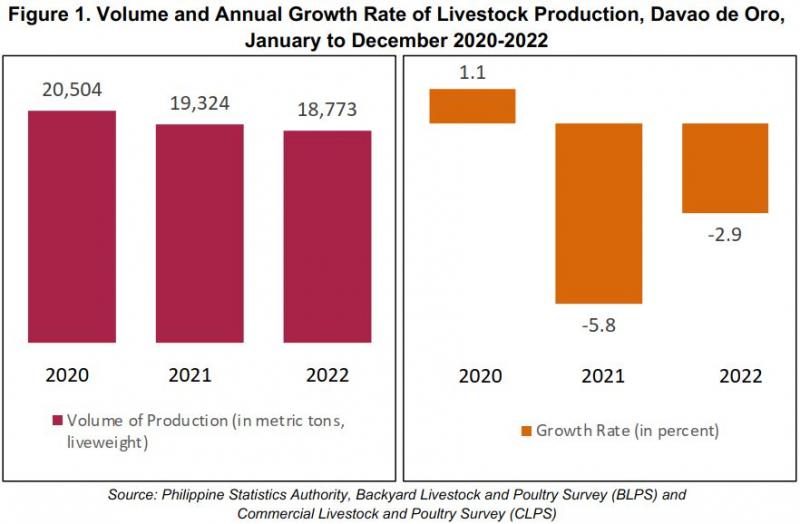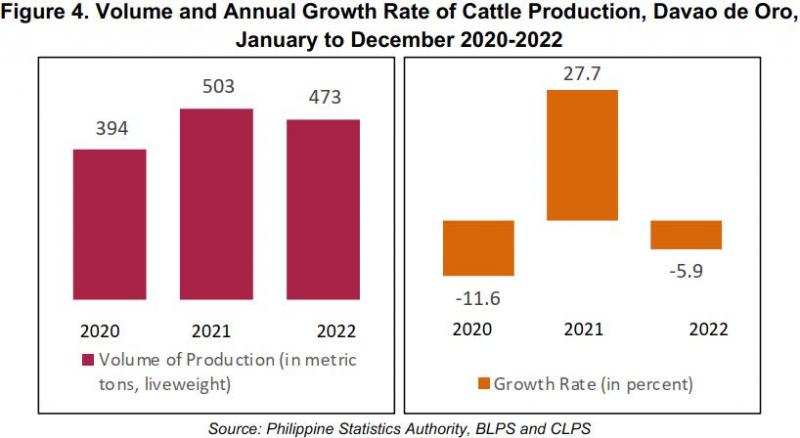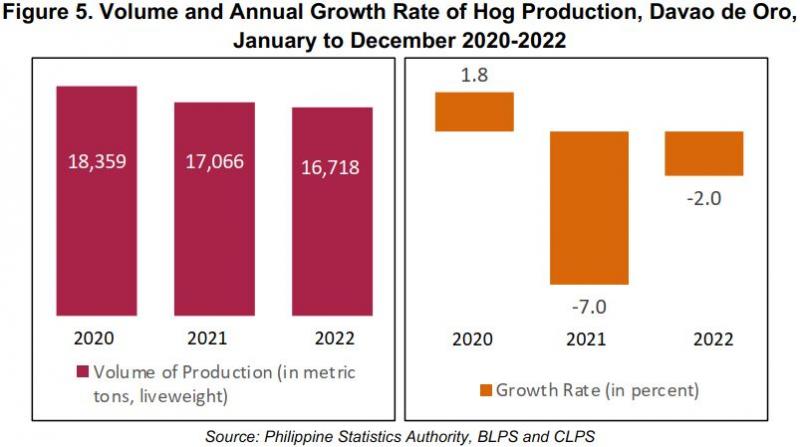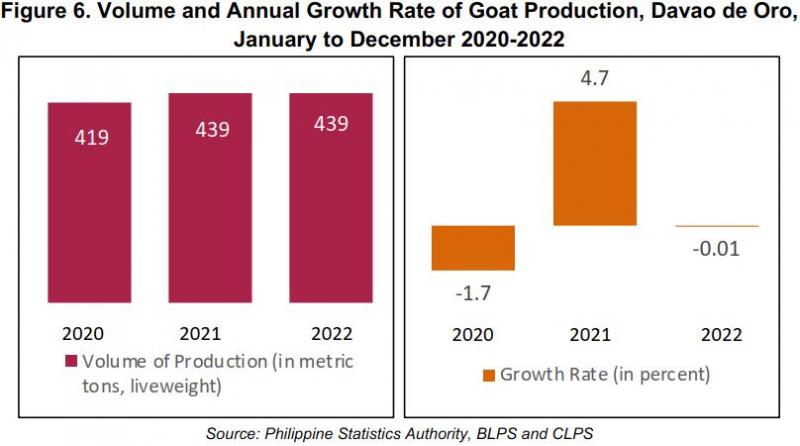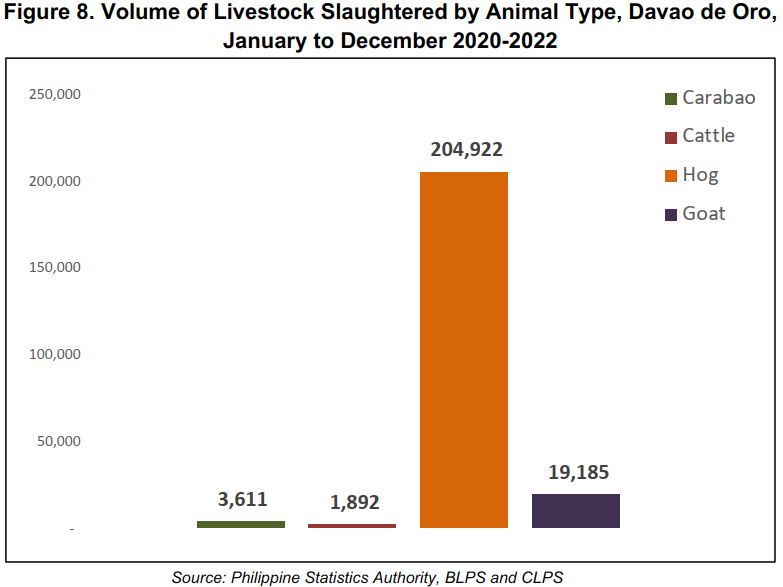Livestock production declines by -2.9 percent
The January to December 2022 total livestock production in Davao de Oro was estimated at 18,773 metric tons, liveweight. This was -2.9 percent lower than the previous year’s output of 19,324 metric tons, liveweight output. From 2020-2022, the recorded levels of production showed an average annual decline of -2.5 percent. (Figure 1)
Hog tops in livestock production
Carabao has the biggest loss in production
In terms of growth rates, all types of livestock exhibited a decline in production in 2022. Carabao had the biggest loss at -13.2 percent from 1,316 metric tons to 1, 143 metric tons in 2022. This production level was the highest annual decline since 2020 and 2021, at -2.8 percent and -1.1 percent, respectively. (Figure 3)
Cattle followed in the drop in production, estimated at 473 metric tons, decreased by -5.9 percent compared to the previous year’s output. The annual decline was lower compared to 2020 at -11.6 percent, but a big drop compared to 2021 at 27.7 percent. (Figure 4)
Hog which had the biggest share in livestock production also contracted by -2.0 percent. The estimated 16,718 metric tons was lower compared to the previous year’s output of 17,066 metric tons, an equivalent decrease of 347 metric tons. Hog production in the province exhibited an average annual decline of -2.4 percent from 2020-2022. (Figure 5)
Only goat production remains stable compared to the 2021 output. However, this was a decrease compared to the 2021 annual growth rate of 4.7 percent but a recovery from the 2020 annual decline of -1.7 percent. (Figure 6)
Hog claims the spot for the highest number of slaughtering
The volume of production refers to the number of tended/raised livestock disposed for slaughter including animals shipped-out for slaughter, in head, and in liveweight equivalent. In terms of production in heads, the province registered a total of 229,610 heads in 2022. This represents a reduction of -0.7 percent from the previous year’s output of 231,151 heads. (Figure 7)
From 2020-2022, the slaughtering of livestock in the province declines by -1.5 percent annually.
Among the livestock, hog top the list for the highest number of slaughtered in the province. Hog slaughtering recorded a total of 204,922 heads or 89.3 percent of the total livestock slaughtered in the province. This was followed by goat, 19,185 heads, making up for the remaining 10.7 percent together with carabao and cattle in the volume of livestock slaughtered, in heads output.
Statistical Tables
Technical Notes:
The Backyard Livestock and Poultry Survey (BLPS) and the Commercial Livestock and Poultry Survey are two of the four major surveys for livestock and poultry. The BLPS and CLPS are national surveys of which BLPS covers backyard farms on carabao, cattle, swine, goat, chicken, duck, and other animals in all four rounds. CLPS, on the other hand, covers commercial farms on cattle, carabao, swine, goat, and sheep for livestock while chicken, chicken eggs, duck, and duck eggs for poultry commodities.
Both surveys are important as the data generated will aid policymakers in generating sound policy decisions on the improvement of backyard and commercial farms for the welfare of the farmers and operators. Moreover, the survey will determine/measure the performance of the livestock and poultry industry and the agriculture sector, as a whole.
Animal Population (also Animal Inventory) - the actual number of animals (in head/bird) present in the farm as of a specific reference date regardless of ownership
Livestock refers to farm animals kept or raised for consumption, work, or leisure. For purposes of censuses and surveys, livestock covers only those that are tended and raised by an operator.
Poultry is a collective term for all domesticated avians for the purpose of food consumption or, the carcass of such avian dressed/processed for human consumption.
Volume of Production (operational definition) - the number of tended/raised animals disposed for slaughter/dressing including animals shipped-out for slaughter/dressing (in “head/bird” and in “liveweight equivalent”).
Starting last April 2022 Round, CLPS uses the results of the 2021 Updating of the List of Establishments (ULE) as sampling frame.

